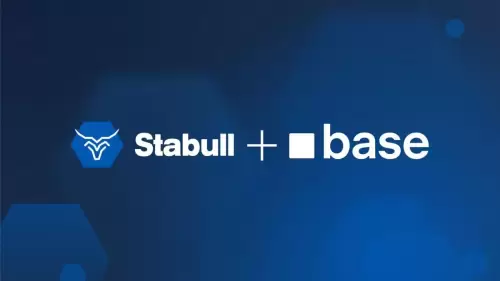 |
|
 |
|
 |
|
 |
|
 |
|
 |
|
 |
|
 |
|
 |
|
 |
|
 |
|
 |
|
 |
|
 |
|
 |
|
Nachrichtenartikel zu Kryptowährungen
From Forensics to Fast Facts: How AI Is Transforming Blockchain Exploration
May 05, 2025 at 06:30 am

In the realm of cryptocurrency, blockchain explorers serve as indispensable tools for navigating the labyrinthine world of transactions and forging connections between onchain activity and real-world entities. As these explorers have advanced in recent years, so too has the technology underpinning them.
Now, two explorers are integrating generative AI into their interface design, a move that may broaden participation in cryptocurrencies by lowering the technical barrier to entry.
The first explorer is Arkham Intelligence, a blockchain analytics tool that democratizes access to intricate blockchain data across networks such as Bitcoin, Ethereum, BNB Chain, Tron, Avalanche, Base, Arbitrum, Polygon, Optimism, and more.
Arkham utilizes AI-driven methodologies, such as transaction analysis and entity identification, parsing both onchain and external data to link wallet addresses to real-world entities.
For instance, consider a recent transfer executed on Binance. As the AI analysis shows, the transaction involved a specific address receiving 0.3065368295589717 BNB via Binance for WBNB Token, which then routed 0.3065368295589717 BNB to Pancakeswap Router v2 before reaching the signer—all accompanied by a withdrawal directive.
The analysis also gives a breakdown of the addresses involved. For blockchain sleuths especially, the ability to quickly identify real-world entities, consolidate onchain and off-chain data, and follow funds across networks dramatically speeds up investigations. It reduces time spent parsing block explorers line-by-line, allowing for faster insights.
Then there’s Blockchair, a multi-chain explorer and analytics tool compatible with 48 distinct blockchains. It also integrates an AI assistant.
As Blockchair explains, “Cuborg, our AI assistant, is here to help you with any questions you might have about transactions, blocks, addresses, or anything else related to blockchain. He can provide you with useful information and insights, and he’s always learning and improving.”
The explorer adds that Cuborg greets users with, “Hi! I’m Cuborg, your AI Assistant. How can I help you today? It looks like you’re viewing a transaction. Feel free to ask me anything about it!”
Looking at this specific BTC transaction, when a dormant bitcoin address created on May 22, 2017, moved 94.729 BTC for the first time in nearly eight years at block height 895,197, Cuborg will tell you all about it.
Cuborg states:
This Bitcoin transaction was included in block 895,197 and executed on August 16, 2023. The transaction involved an output of 94.729 BTC from the address. The transaction fee was 0.0005 BTC. The transaction was mined by pool ViaBTC. The transaction had a total size of 2119 bytes.
As AI‑led explorers mature, decoding cryptographic ledgers no longer demands forensic patience; anyone can ask conversational questions and surface plausible leads within seconds. That shift resets expectations for transparency across every network, forcing exchanges, protocols, and even governments to assume their flows are instantly readable. The resulting informational parity may nourish healthier markets and accelerate mainstream engagement in the coming years.
Yet granular clarity brings a paradox: the same conversational dashboards empowering honest observers can equally arm opportunistic adversaries. As attribution models grow sharper, users may gravitate toward privacy coins, mixers, zero‑knowledge schemes, or entirely new protocols to shield movement. The right to privacy—and the tools that enhance obfuscation—is a fundamental human right. Yet, the transparency baked into most leading blockchains transforms that principle into a double-edged sword, where the pursuit of accountability often comes at the cost of discretion.
Haftungsausschluss:info@kdj.com
Die bereitgestellten Informationen stellen keine Handelsberatung dar. kdj.com übernimmt keine Verantwortung für Investitionen, die auf der Grundlage der in diesem Artikel bereitgestellten Informationen getätigt werden. Kryptowährungen sind sehr volatil und es wird dringend empfohlen, nach gründlicher Recherche mit Vorsicht zu investieren!
Wenn Sie glauben, dass der auf dieser Website verwendete Inhalt Ihr Urheberrecht verletzt, kontaktieren Sie uns bitte umgehend (info@kdj.com) und wir werden ihn umgehend löschen.
-

-

-

- Brasilien, Bitcoin, Hördatum: Ist Brasilien Bitcoin kurz davor, Bitcoin zu nutzen?
- Aug 06, 2025 at 08:00 pm
- Die Abgeordnete in Brasilien wird am 20. August 2025 eine öffentliche Anhörung abhalten, um die Aufnahme von Bitcoin in seine nationalen Reserven zu besprechen. Könnte dies ein Game-Changer sein?
-

-

-

-

-

-






























































